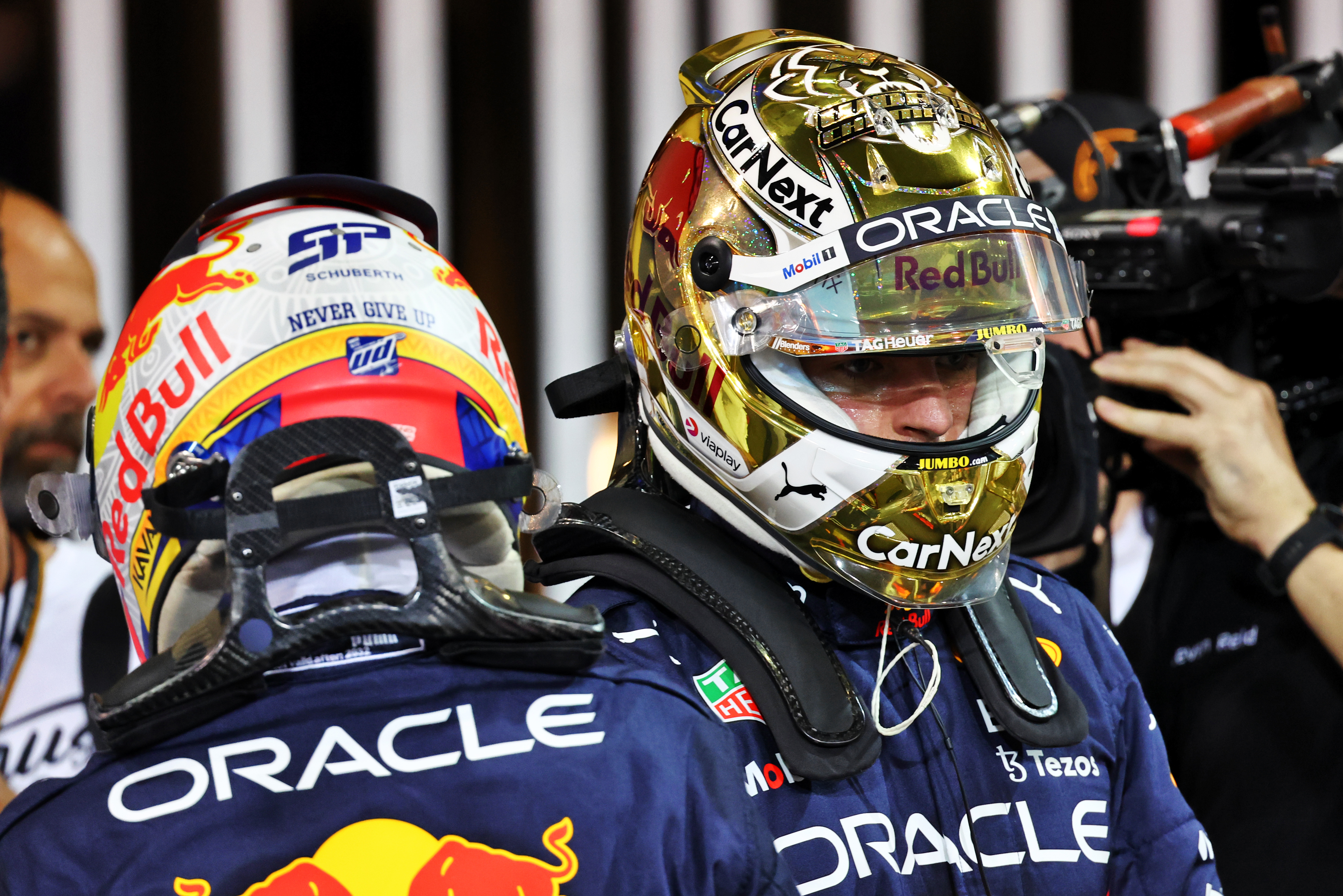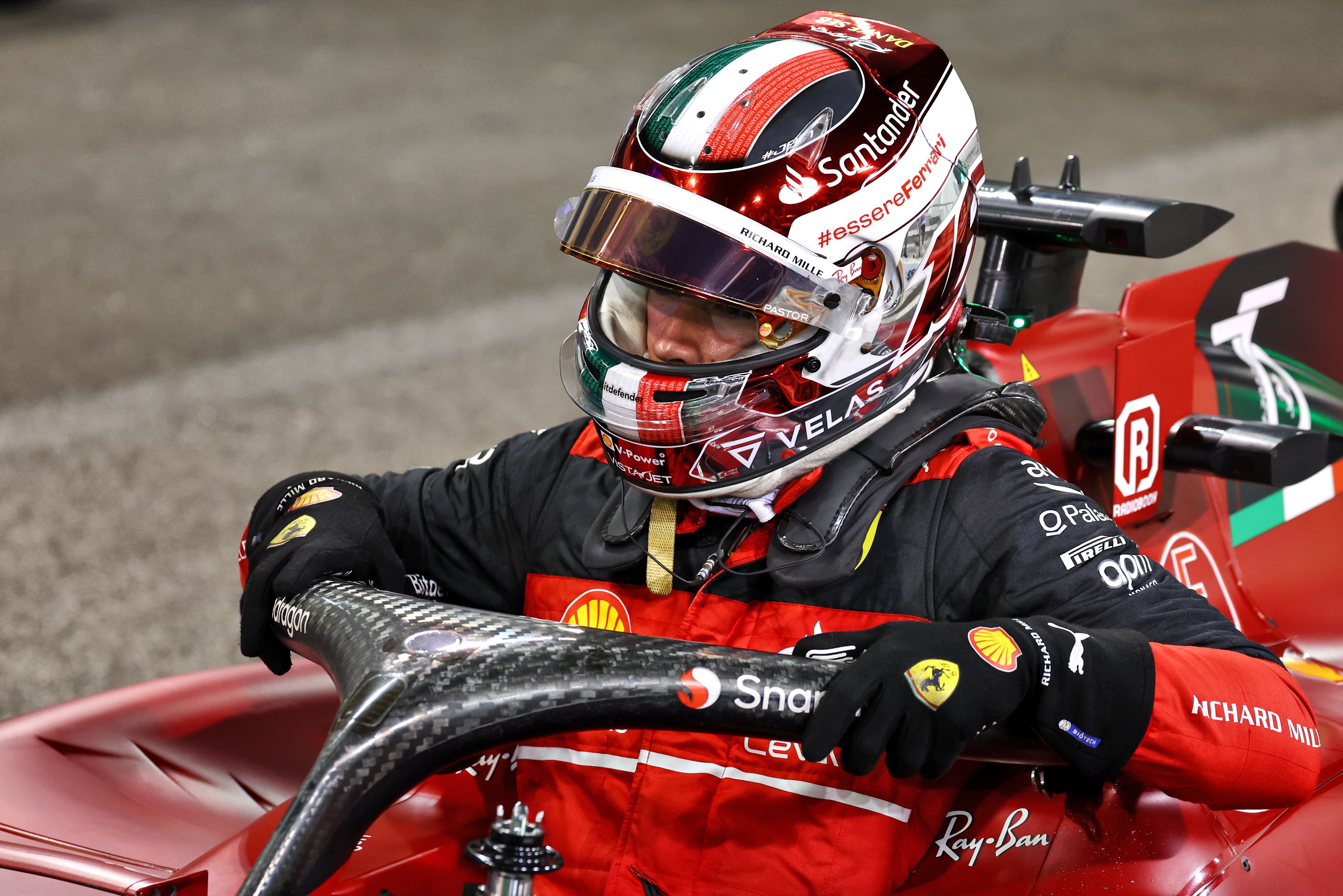Up Next

Arriving at the Abu Dhabi finale on equal points to your rival with everything hanging on the race’s outcome sounds familiar from a year ago.
This time of course it’s only for the position of runner-up between Red Bull’s Sergio Perez and Ferrari’s Charles Leclerc. But it’s an intriguing battle nonetheless, especially so now that qualifying has put them second and third on the grid – separated by just four-hundredths of a second.
With Perez’s team-mate Max Verstappen starting from pole and Carlos Sainz starting the other Ferrari behind Leclerc on the second row, the team and strategy dynamics are potentially very intriguing.
How crucial those four hundredths of a second might be we’ll only know tomorrow, but it looks likely that the tow provided by Verstappen to Perez on the final run made the difference in deciding the second and third grid positions. Verstappen was supposed to be giving Checo a tow on both Q3 runs but there was a delay with Verstappen’s car leaving the garage for the first of them.
“The car just died,” explained Max. “We had to reboot it and thankfully it was OK.” You could hear the concern, and maybe the paranoia, in Perez’s voice as he took to the track alone. “What happened?” he asked, ie what had just happened to his tow? Running on his own, his lap was cleaner than Leclerc’s and a few hundredths faster – but it put him only a provisional third behind Verstappen and Carlos Sainz.
But Perez needn’t have worried. It all came good on the second runs, with Verstappen positioned perfectly to give him a good slipstream down the straights up to turns six and nine. “It certainly did help,” said Perez. “You could feel it in sector two, it was working. You lose a bit in sector three [as a result] but overall it’s a gain.”

Leclerc tends not to like the preparation choreography necessary for receiving a tow and prefers just to find a good gap and run cleanly on his own. Such was the case here. He feels that too often trying for a tow ends up compromising more than helping. But it worked perfectly here for Red Bull and the tow was worth comfortably more than the tiny gap between them – i.e without it, Perez would likely have been third on the grid and Leclerc second.
Will that turn out to be important or not to the outcome? Historically, the run to the first corner and the width of the track there make it a place where it’s more than feasible to overtake. That and the Ferrari’s typically better startline performance (not always, but Singapore was about a wetter patch on Leclerc’s line than Perez’s) make their respective positions out of that turn and how the dynamics then work down the two slipstreaming zones on that opening lap potentially decisive.
The straightline performance favours Red Bull, but not by a great deal. Perez has opted for a slightly higher wing angle than Verstappen, looking to look after his rear tyres in a race which looks balanced between a one-stop and a two. The Ferrari is actually comparably quick on the straights here and its ability to accelerate harder out of the slow corners may turn out to be gold dust if it enables Leclerc to fully exploit DRS if he’s behind.
The chances of Verstappen surrendering a victory to aid Perez’s cause look to be zero, given his response to the idea in Mexico and his reaction in the closing laps of Brazil last week. If Perez can establish himself in second, Verstappen allowing him past would be the simplest way of taking Perez out of Leclerc’s reach. But it would be possible for Verstappen to do this without surrendering a victory – as all Perez has to do is finish ahead of Leclerc. In such a situation Verstappen could wave his team-mate by, restrict Leclerc’s pace by a few tenths (or until the Ferrari’s tyres begin to wilt earlier, as usually happens), then have the place handed back to him when Perez is ‘safe’.
It’s impossible to imagine every possible scenario, but there are strategic possibilities at Ferrari, as Leclerc has hinted at: “We’ll see once we are in the race, but I hope me and Carlos can put a bit of pressure on Checo by trying different things.”

One example might be to commit fully to a two-stop, pit Sainz early and thereby have him as the blocker potentially preventing Perez from anticipating a Leclerc undercut attempt by coming in before his rival.
But to apply pressure means being able to run at a comparable pace for long enough and in the latter half of this season the Ferrari’s tyre usage has definitely been its weak point. “It’s something we’ve paid a lot of attention to this weekend,” says Leclerc, very much aware of the issue, “so I’m hoping we don’t have too much degradation. It was pretty difficult in FP2 and we made a few changes and it was better in FP3 this morning. But the track temperatures in that session are very different so we will see if it’s really better.”
Then there’s the possible randomising potential of Mercedes. Lewis Hamilton and George Russell qualifying only fifth and sixth 0.7s off Verstappen’s pace was quite a surprise given the car’s recent improved form.
But after experimenting with wing levels both drivers have opted for the higher of their choices and are up to 7km/h slower than Red Bull at the end of the straights. This suggests either Mercedes figured it was only going to qualify fifth and sixth anyway and so went with whatever wing gave the better lap time – and/or perhaps the team is committing fully to a one-stop and has chosen the extra wing level to protect the tyres. As those contrasting strategies play out, where does it put Mercedes relative to Perez and Leclerc? In the way of one or both at critical moments?
There is a kaleidoscope of possibilities, as always. But this intriguing struggle is at least keeping some tension in a race which might otherwise be thought of as dead rubber.






